
Marcel PINAS
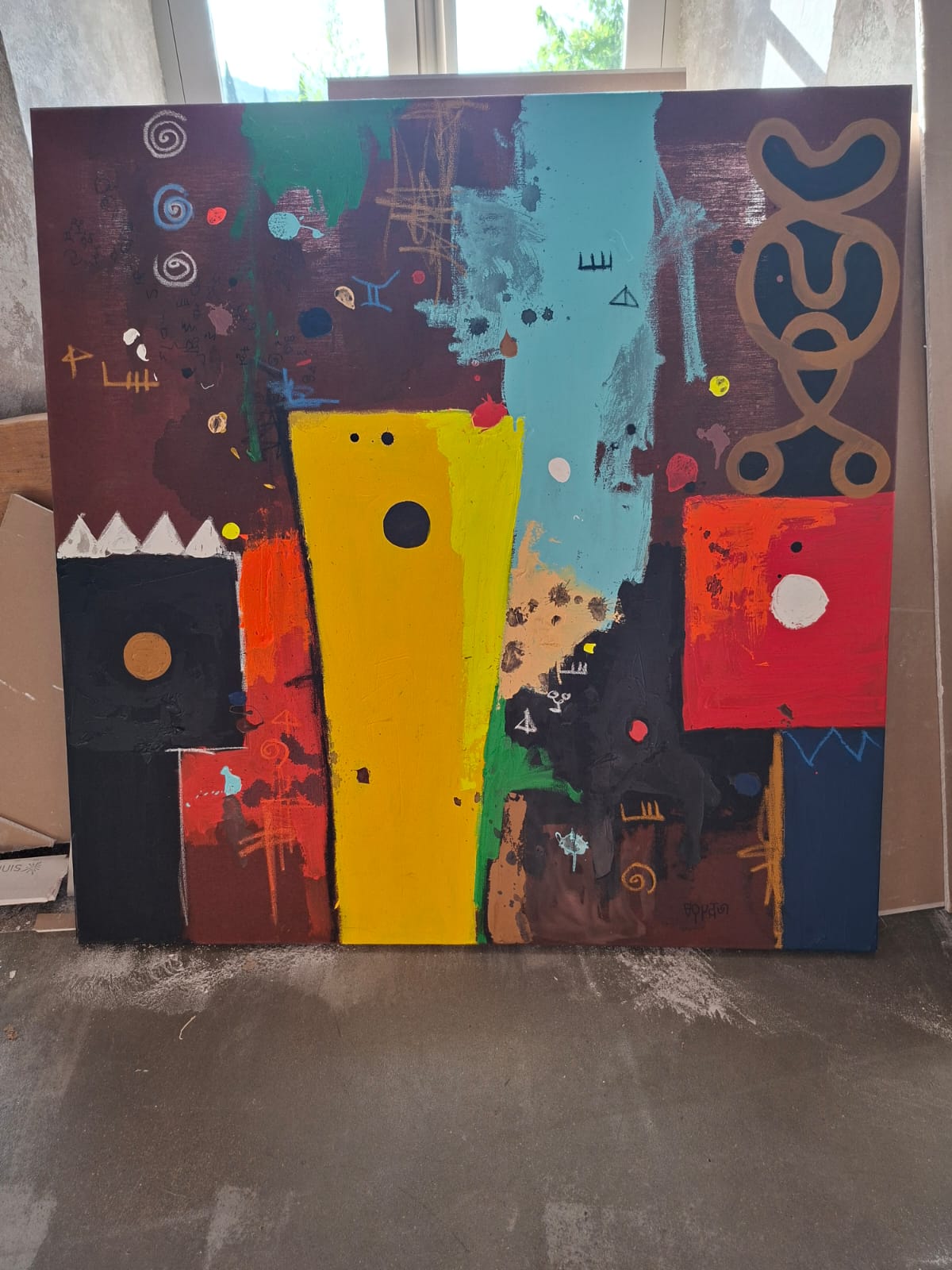

The Afaka Script
No one is certain of the exact date, but it most probably occurred in the primeval forests of Surinam one night in 1908. The negro, Afaka, of the Ndyuka tribe had a dream in which the ghost of a white man appeared to him. The ghost ordered Afaka to devise an alphabet for the people of his tribe who at that time were illiterate.
In the days that followed, Afka realised that dream and designed his alphabet. Every two or three days he made a symbol, 56 in all. These symbols were phonetic syllable signs, with which could be written every possible N’dyuka word.
In the beginning, Afka kept his alphabet to himself, but the appearance of Halley’s Comet in 1910 was a sign to him that he should spread his knowledge of the alphabet. He was in contact at that time with missionaries, who made a number of attempts at converting the pagan Ndyuka to Catholicism. They saw immediately the importance of Afaka’s alphabet for the christianisation of these negroes, but a number of the tribal leaders did not wish them to gain access to it. Within the N’dyuka tribe, however, a core group always remained active in instructing and passing on knowlegde of this alphabet.
The key to the alphabet is shown here, transcribed by Dubelaar and Gonggrijp in 1968. It lists all the Afaka symbols and their equivalent values. They can all be terminated on a nasal dipthong, as in ‘Nuan(g)’ (= eat-ing).
Le Script Afaka
Personne n’est certain de la date exacte, mais cela se passa dans la forêt vierge du Suriname, une nuit en 1901.
Un nègre, Afaka, de la tribu N’dyuka eut un rêve dans lequel le fantôme d’un homme blanc apparut. Le fantôme ordonna à Afaka de créer un alphabet pour les membres de sa tribu qui étaient illettrés.
Pendant les jours qui suivirent, Afaka réalisa ce rêve et dessina son alphabet. Tous les deux ou trois jours il créa un symbole, 56 en tout. Ces symboles étaient des signes phonétiques en forme de syllables avec lesquels pouvaient être écrits tous les mots N’dyuka.
Au début Afaka garda son alphabet pour lui-même, mais l’apparition de la comète Halley en 1910 fut un signe pour lui, il devait partager et diffuser la connaissance de cet alphabet. A l’époque il était en contact avec des missionnaires, qui essayèrent plusieurs fois de convertir les N’dyuka au catholicisme. Ils virent immédiatement en cet alphabet Afaka un outil pour la conversion de ces tribus au christianisme, mais un grand nombre de leurs chefs ne voulaient pas partager cet alphabet avec eux ! Parmi les N’dyuka, un groupe demeura toujours actif et s’occupa de transmettre la connaissance de cet alphabet.
La clé de cet alphabet est montrée ici, transcrite par Dubelaar et Gonggrijp en 1968. Elle liste tous les symboles Afaka et leurs valeurs équivalentes. Ils peuvent être tous terminés par une diphtongue nasale.
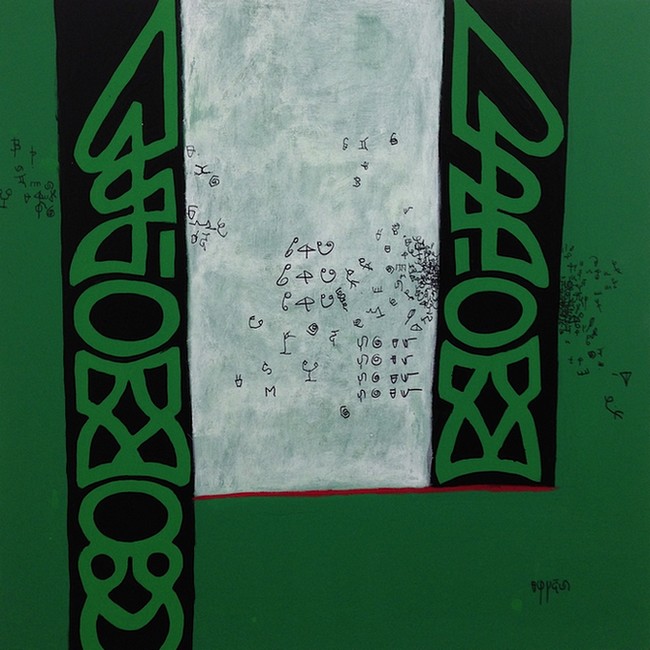
Untitled / Sans titre
Mixed media on canvas / Technique mixte sur toile – Dim : 100 x 100 cm

Le silence du soir – Author’s technique – 2023
Material : Canvas, oil painting, acrylique, 24 carat gold plated – Size : 200 x 160 cm




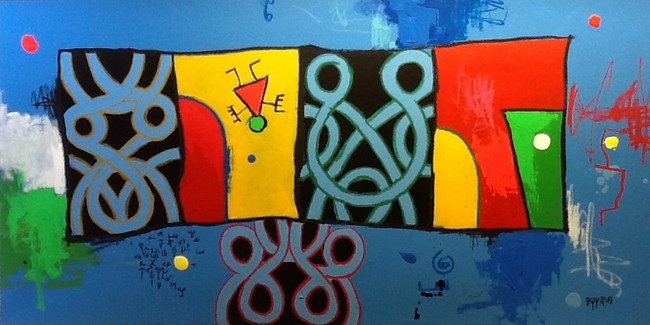
Untitled / Sans titre
Mixed media on canvas / Technique mixte sur toile – Dim : 50 x 100 cm
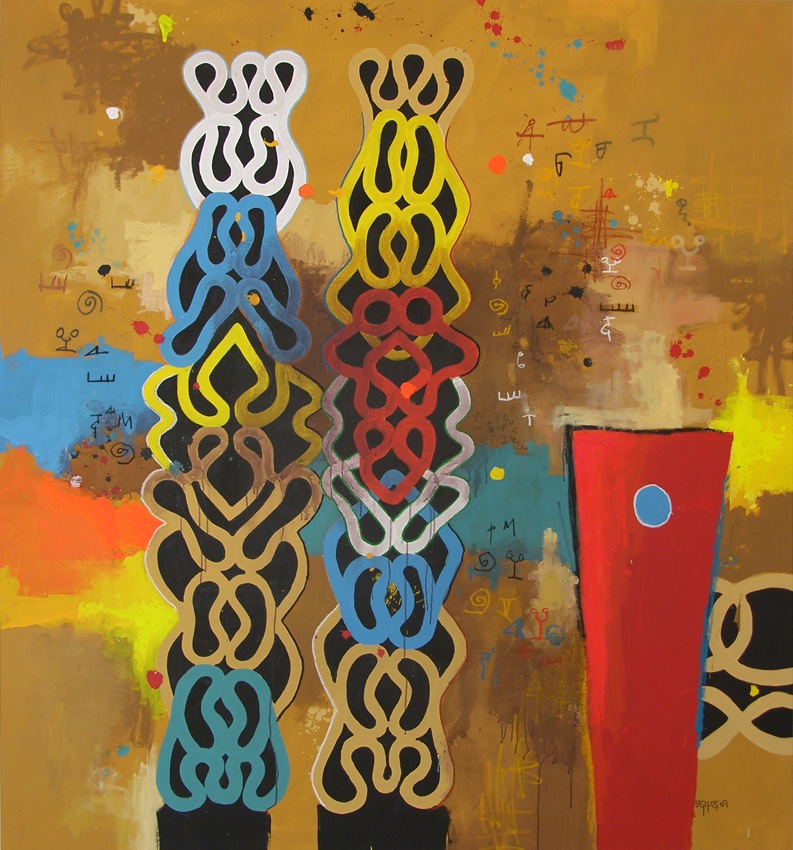
Untitled / Sans titre
Acrylic on canvas / Acrylique sur toile
2007 – Dim : 210 x 195 cm

Oker
Mixed media on canvas / Technique mixte sur toile – Signed – Dim : 143 x 184 cm

Blue
Mixed media on canvas / Technique mixte sur toile – Signed – Dim : 205 x 160 cm

Green
Mixed media on canvas / Technique mixte sur toile – Signed – Dim : 196 x 189 cm
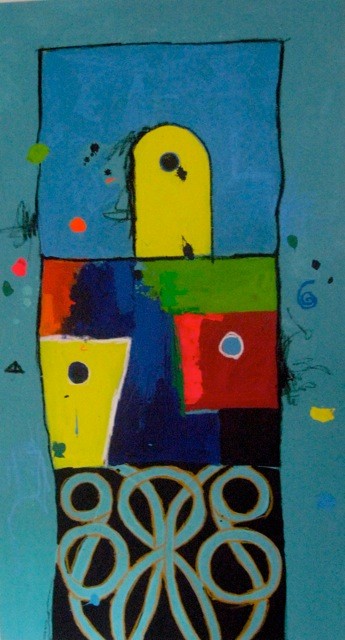
Kibri a Kulturu
Mixed media on canvas / Technique mixte sur toile – Dim : 145 x 80 cm

Untitled
Mixed media on canvas / Technique mixte sur toile – Signed – Dim : 86 x 165 cm

Pangi
Mixed media on canvas / Technique mixte sur toile – Dim : 80 x 80 cm
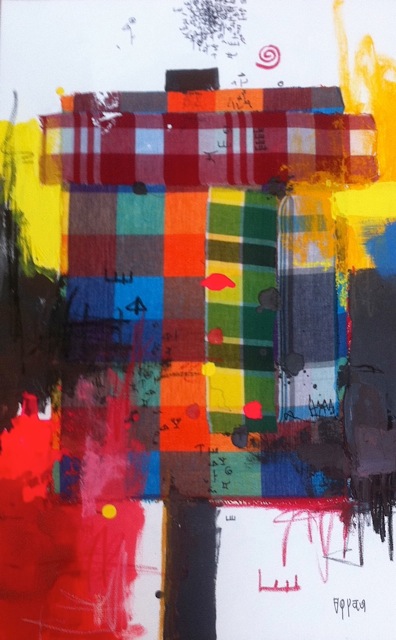
Pangi
Mixed media on canvas / Technique mixte sur toile – Dim : 81 x 54 cm
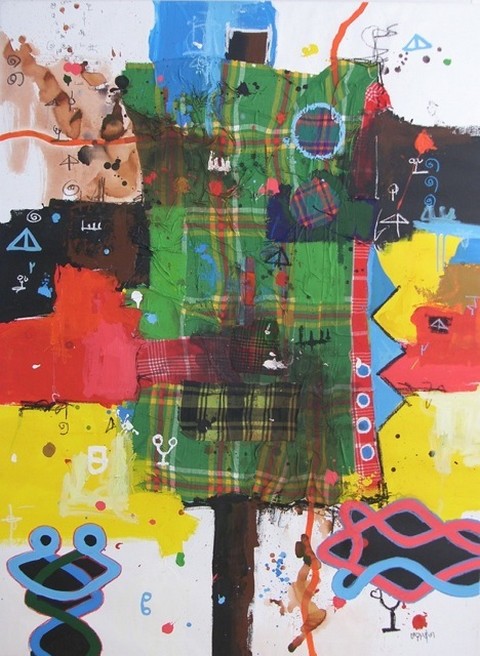
Pangi
Mixed media on canvas / Technique mixte sur toile – Dim : 175 x 140 cm

Pangi
Mixed media on canvas / Technique mixte sur toile – Dim : 73 x 50 cm
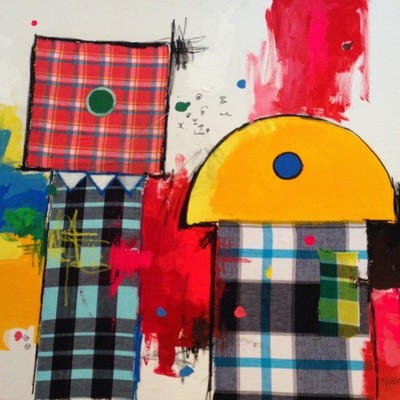
Pangi
Mixed media on canvas / Technique mixte sur toile – Dim : 100 x 100 cm

Afaka
Mixed media on canvas / Technique mixte sur toile – Dim : 320 x 216 cm
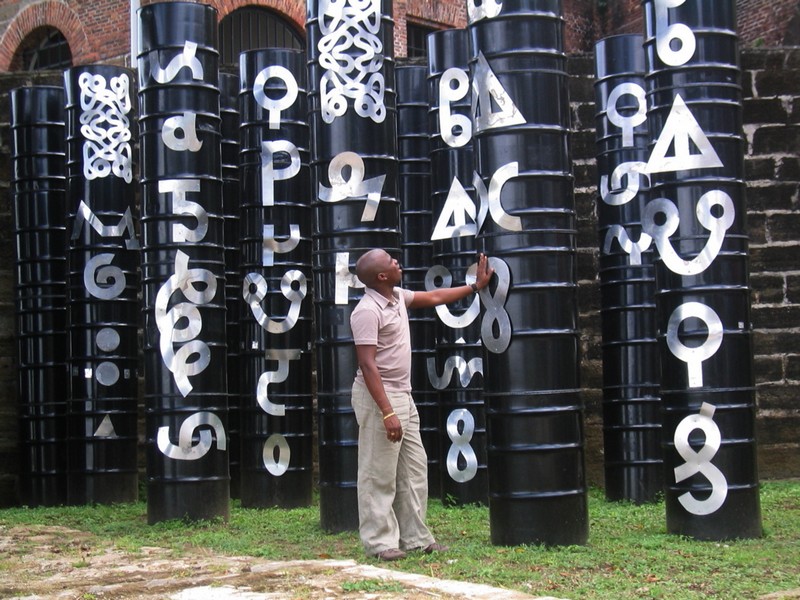
Oil barrel totems
H : 4.50 m
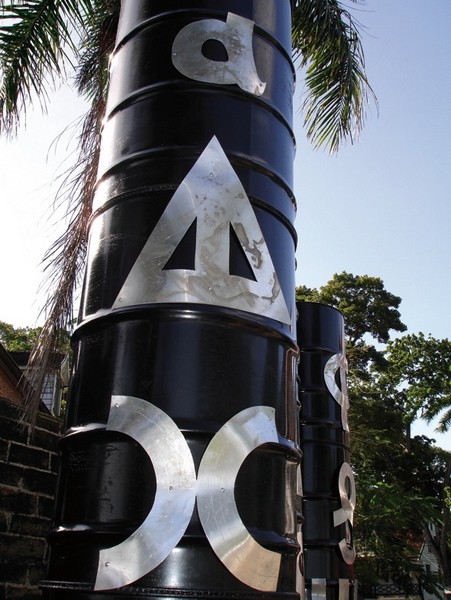
Oil barrel totems
Detail

The Future
Mixed media on wood / Technique mixte sur bois – 2007 – Dim : 244 x 488 cm
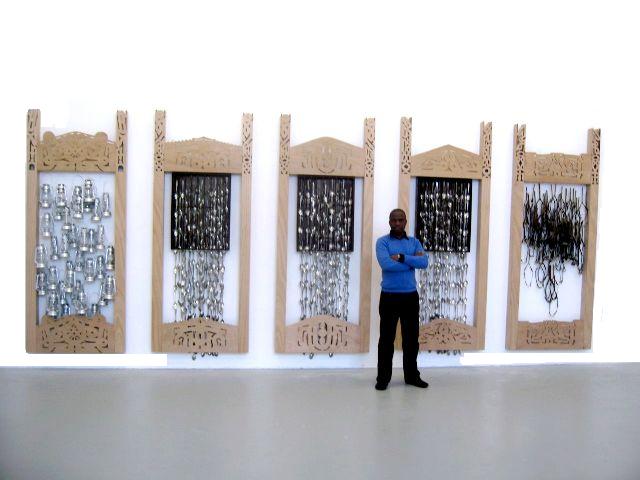
Installation Rijksakademie Amsterdam
December 2007

Marcel Pinas Rijksacademie Open days December 2008
Ceramic skulls representing victims of the pollution in Suriname
Installations
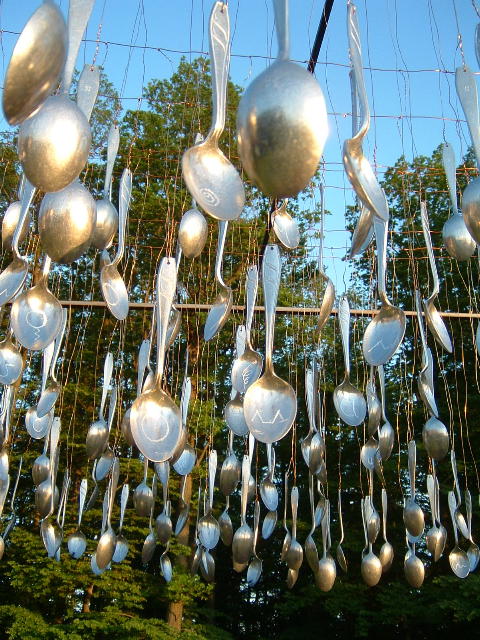
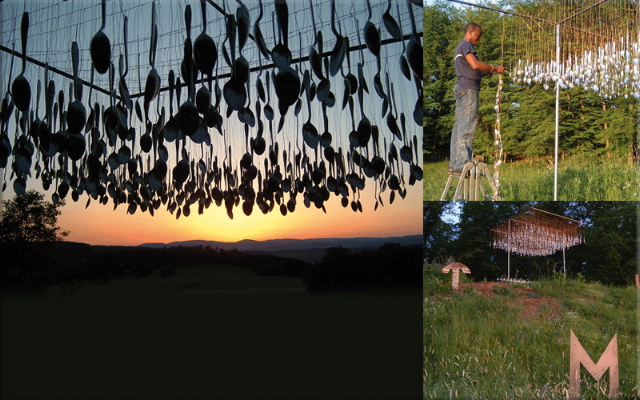


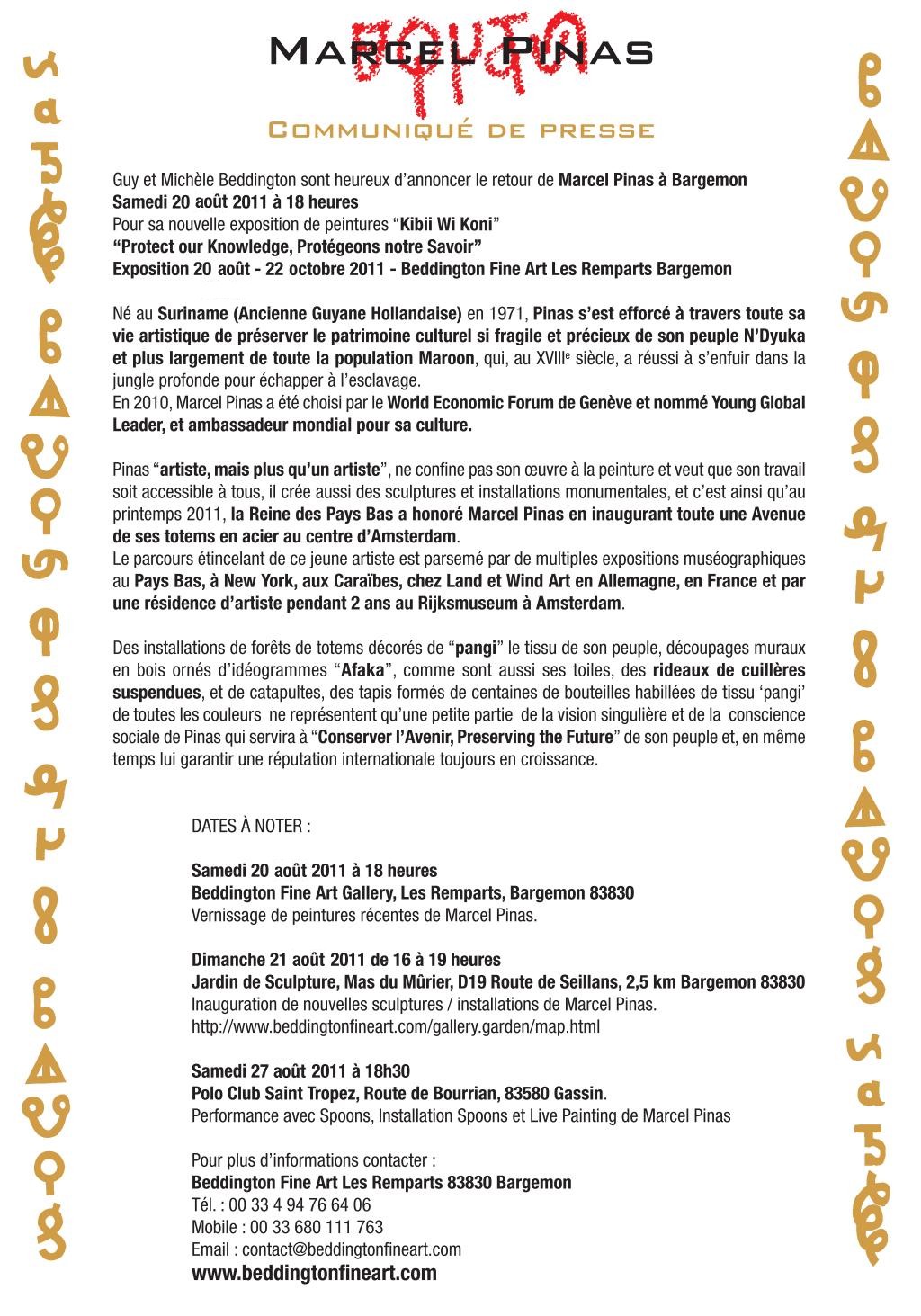
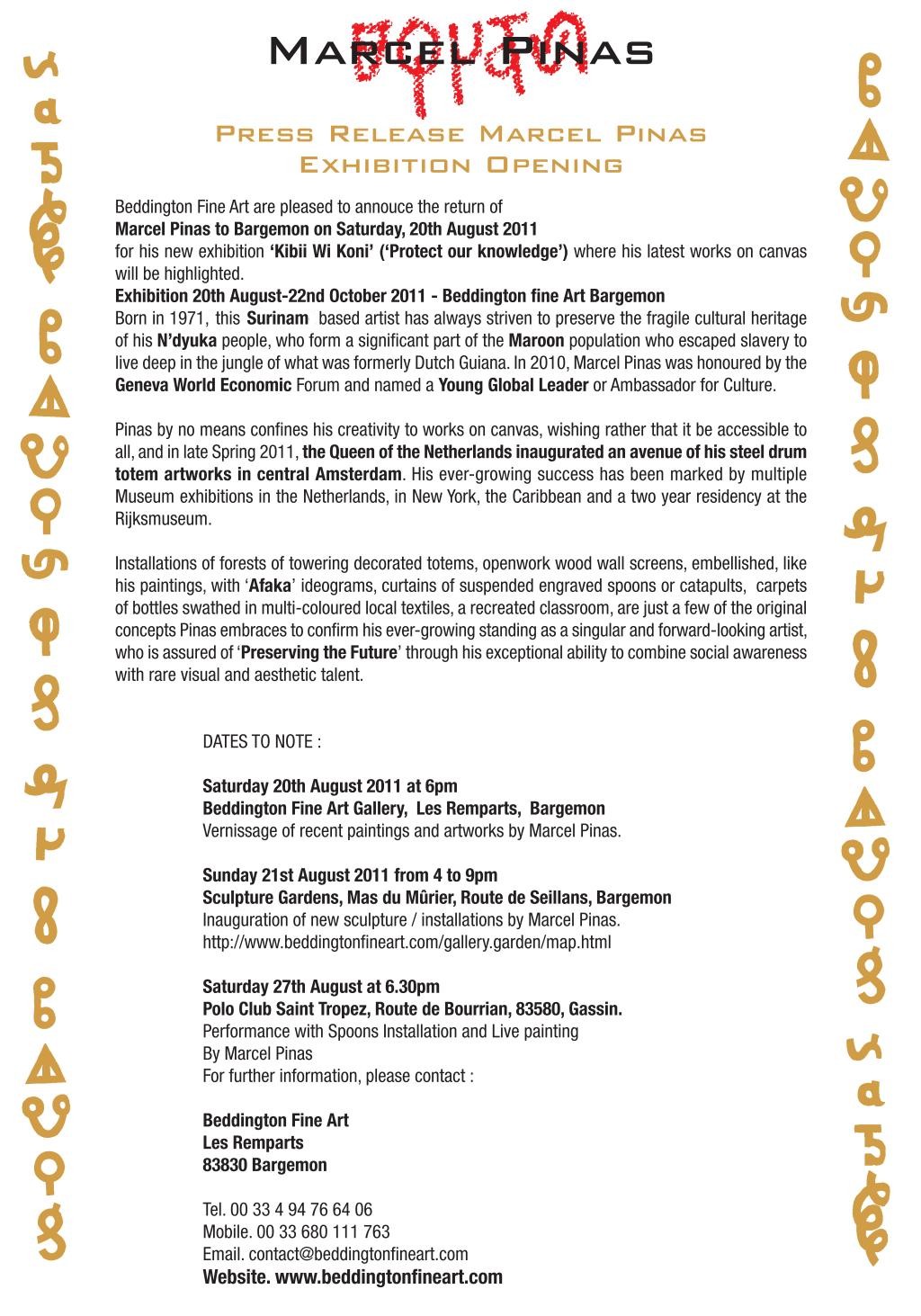

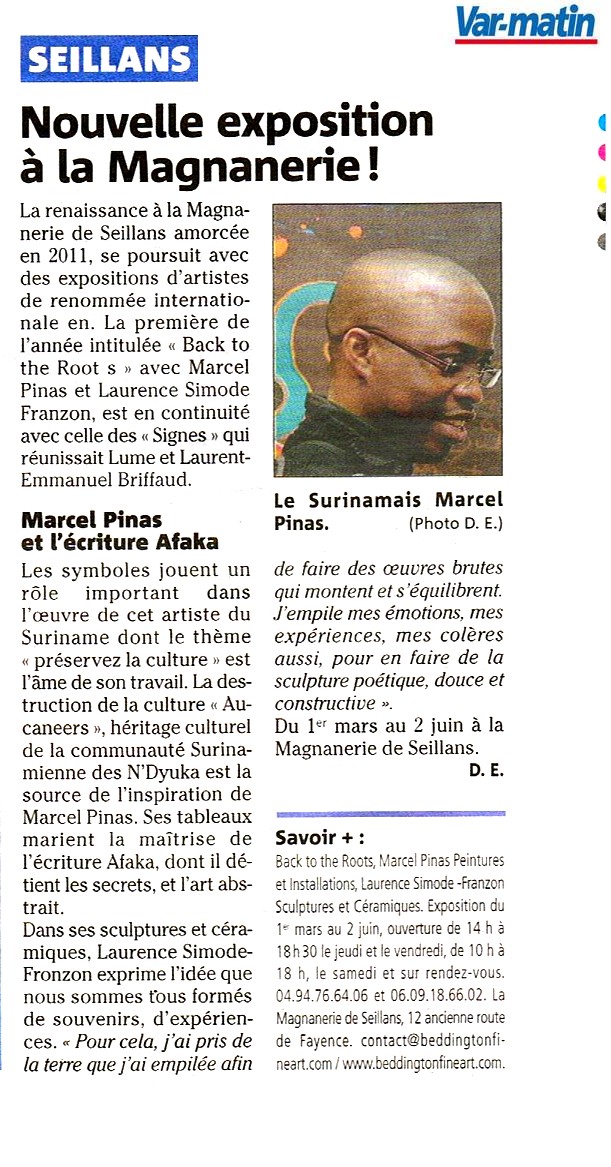
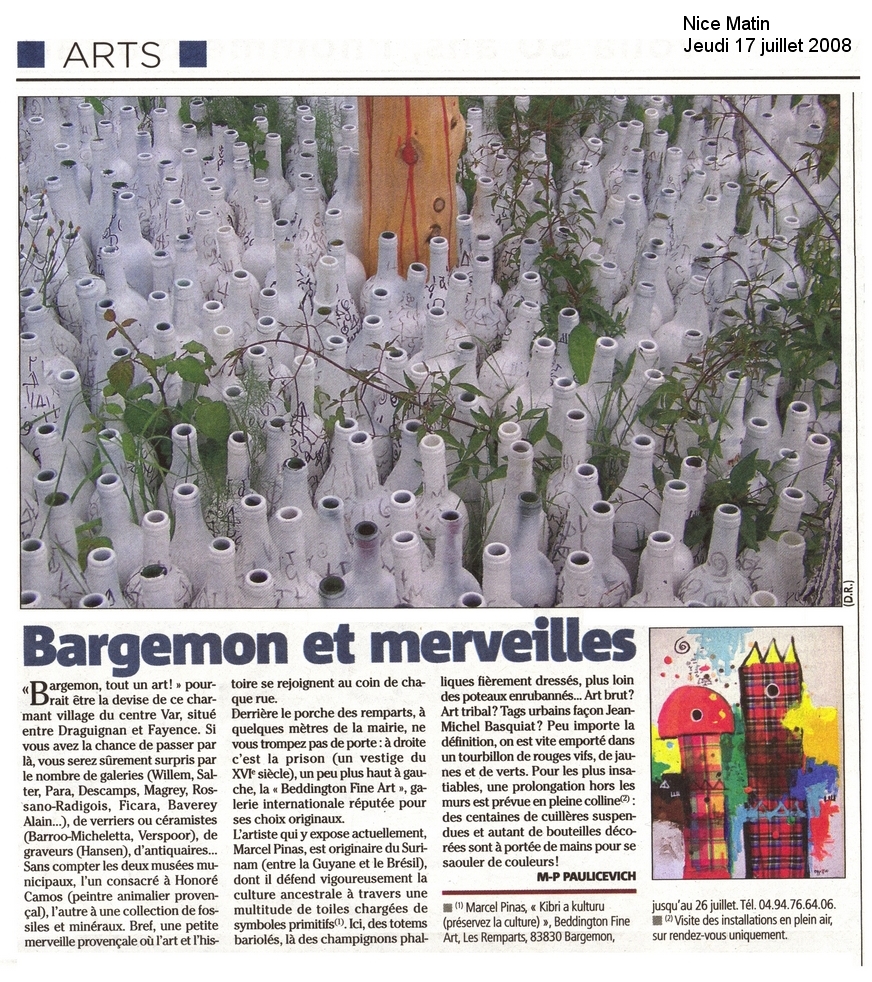
Biography/Biographie
Special commissions
Tropen Museum Amsterdam 2008 Moiwana Monument, district Marowijne, Surinam 2006 Reconnecting Africa Permanent Installation, Tropen Museum , the Netherlands
Awards
2005 First Prize for exterior Installation Beweyger Wind, Sachenberg, Germany
2010 Honored Young Globla leader, World Economic Forum, Genève, Switzerland
2000 Business Finance Award, Utrecht, Netherlands
1999 Top student Edna Marley College for Visual and Performing Arts, Kingston, Jamaica
2015-2016
Galerie Beddington Fine Art Bargemon 83830 Var France
Smith Davidson Gallery Amsterdam, Netherlands
2015
3rd Edition of the Moengo Arts Festival
Pan Amsterdam, Netherlands
2013-2014
Ivan Chevillotte in collaboration with Beddington Fine Art ‘Kibri a Kulturu’, ‘Preserve the Culture’, Munich, Germany
2014
Sitelines Unsettled Landscapes, Santa Fe U.S.A
2013
Atelier Michel Fedoroff in collaboration with Beddington Fine Art Bargemon 83830 Var France
2012
Havana Biennale Cuba
2011
Paintings and Sculptures Beddington Fine Art Gallery and Garden 20th August- 15th 0ctober 2011
Les Sentiers de la Sculpture Polo Club St Tropez
Kibii wi Koni Installations KKF building June 21 – 28 et Kibii wi Koni Peintures De Hai Suriname June 29 – July 3, 2011
2010
Beddington Fine Art Jardins de la Galerie
Sribi Switi,… Sa e Psa, Puichri Studio, La Hague, Pays-Bas
Paramaribo Span , DSB Bank, Paramaribo, Suriname
2009
Hôtel de Ville, Paris
8 December Public Art Installation, Fort Zeelandia, Suriname
National Art Fair, Paramaribo, Suriname
Double Feature Readytex Art Gallery, Suriname
Licht aan Zee, Den Helder, the Netherlands
Kibri Wi , Stedelijk Museum, Schiedam, the Netherlands
‘Kibrii a Kulturu’, Gemak, The Hague, the Netherlands
Kréyol Factory, Paris, France
Havana Biennale, Cuba
Wakaman Exhibition Fort Zeelandia , Suriname
2007 – 2008
Fernades goes Art with Readytex Art Gallery, Suriname
MK Galerie, Berlin, Germany
Beddington Fine Art Bargemon 22nd March – 26th July 2008
Oude Kerk, Amsterdam , the Netherlands
Open Atelier Rijksacademie, Amsterdam
The Netherlands Latitudes 2007, Paris, France
Foundation Herman Krikhaar Le Cygne, Salernes 10 June – 26 August 2007
‘Kibri a Kulturu’ Magazin Galeria, Ibiza, Baleares
Two year stay in Rijksakademie, Amsterdam
Latitudes 2007 – Terres du monde – 14 December 2007 – 19 January 2008
Infinite Island, Contemporary Carribean Art – Brooklyn Museum New York – 31 August 2007 – 27 January 2008
‘Kibri a kulturu’
‘Kibri a culturu’ or ‘preserve the culture’. This theme is the soul of the work of the Surinamese artist Marcel Pinas. The cultural heritage of the Surinamese maroon community of the N’dyuka, also known as the Aucaners is Marcel Pinas’ source of inspiration as well as his motive.
‘My art is about experiences from the past ; it deals with the destruction of the N’dyuka culture in Surinam; in my work I express that situation, paying attention to the protection of cultures in general. I focus on the N’dyuka because I am a descendant of the N’dyuka of Surinam.
The symbols that play a role in my work are the motifs that are used by the N’dyuka. Decorating tools and implements is an ancient custom ; for example: doors, plates and stools.
The decorative patterns not only make the objects more beautiful; it is also a way of conveying a message – without words to a loved one.
In olden times the decorating techniques were a means of communication, used in particular to get a message to someone close; the decorations also served to distinguish these objects from others. Nowadays only the beautification aspect seems to be important.
‘Visual artist’ Marcel Pinas does still use symbols as a means of communication: he has a message for society and he also sees himself as a safety valve for this society. His art articulates more than merely an individual observation. Pinas: ‘Art’ is very important in any society. ‘Art’ is not only for the rich, it is also for the man in the street. I want to reach the common Surinamese people with my installations and introduce them to modern art. ‘Art’ nurtures the community.
Pinas’ canvasses, which make up the principal part of his work, underline his intention to preserve elements from the N’dyuka culture also in the present day.
Colours which generally have their origin in Surinam’s multi-coloured nature, are liberally applied to the canvas. Significant symbols, parts of implements, pieces of fabric : there is always something extra in the work of Marcel Pinas. The wealth of the culture is reflected by the canvas and leaves it’s mark on the objets d’art’.
Roots
On the 22nd of March 1971, Marcel Hendrik Pinas was born in Pelgrimkondre, in the district of Marowijne in North-East Surinam.
I was at boarding school with the friars near Moengo and Moiwana, two villages that played such an important role during the Interior War. There is nothing left of the village he was born in ; ‘Where I grew up,everything is gone. It is like a dream : you see it, but you don’t actually see it. Everything has disappeared due to the civil war’.
‘From my first year in elementary school on, I was at boarding school in Abadukondre with the friars and sisters near Moengo. I would go home one weekend a month. During my years at secondary school in Paramaribo I became even more alienated from my culture ‘Y’e du lek’ wan dyuka !‘ was not something you wanted to hear.
Even as a child Marcel made lots of drawings. At the age of sixteen, he started taking classes at the Nola Hatterman Institute which is closely associated with the Ministry of Education and Community Development. He also studied at the Anton de Kom University (ADEK) and the teacher training institute, both in Surinam.
In 1997, he was granted a scholarship by the Surinam goverment to go to the Edna Manley College of Visual and Performing Arts in Jamaica. For two years he took visual art classes there. He was elected top student of the 1999 graduation class. Pinas also participated in various workshops with foreign artists, both in Surinam and abroad.
In 2002 he was awarded ‘ the Business Finance Art Award ‘ in the Jaarbeurs in Utrecht, The Netherlands, for being the most outstanding participating artist.
In Germany he won first prize for ‘Moved Wind Art’, a special installation in which Pinas interlaced N’dyuka cultural heritage and the German landscape in a singular manner.
From 1992 until now he has been associated with the Nola Hatterman Institute as artistic staff member.
He regularly exhibits his work both in Surinam and abroad Guiana, French Guiana, Brazil, Jamaica, Trinidad, the United States, Switzerland and Germany are all countries where Pinas’s work has been exhibited. There are plans also to focus even more on national and international Land Art Events in the future.
Marcel’s desire to reach the broadest possible audience with his work (and the message it carries), is easier to fulfil with this type of project :
Marcel Pinas :’The moment the work is placed in a public space the confrontation begins’.
Extract from ‘Kibri a Kulturu’ Marcel Pinas
Uitgever- Publisher
Buro Vlasblomb Art and Projects BV, Benningbroek NL
vincent@burovlasblom.nl
Marcel Pinas was introduced to Beddington Fine Art by Vincent Vlasblom, Hermann and Helena Krikhaar who showed his work for the first time at the Fondation Hermann Krikhaar in Salernes, Var, throughout July and August of this year.
He joined Beddington fine Art in September 2007.
|
Exposition permanente : Tropen Museum Amsterdam 2008 Moiwana Monument, district Marowijne, Suriname 2006 Reconnecting Africa Permanent Installation, Tropen Museum , Pays-Bas Prix 2015-2016 2015 2013-2014 2014 2013 2012 2011 2010 2009 2007 – 2008
« Kibri a kulturu » ou « Préservez la culture »Ce thème est l’âme du travail de Marcel Pinas, artiste du Suriname. L’héritage culturel de la communauté Surinamienne des N’Dyuka, aussi appelés les « Aucaners’ est la source de l’inspiration de Marcel Pinas ainsi que sa motivation: »Mon art dépeint des expériences du passé, Il parle de la destruction de la culture N’dyuka au Suriname ; dans mon travail, j’exprime cette situation, faisant attention à la protection des cultures en général. Je me focalise sur les N’dyuka parce que je suis un descendant des N’dyuka du Suriname. Les symboles qui jouent un rôle important dans mon travail sont ceux utilisés par les N’dkuya. Décorer des outils et des instruments est une ancienne coutume, par exemple décorer des portes, des assiettes, des tabourets. En tant qu’Artiste Visuel, Marcel Pinas utilise encore les symboles comme un moyen de communication : il a un message pour la societé, il se voit aussi comme une valve de sécurité pour cette société. Son art articule beaucoup plus qu’une observation individuelle. Les couleurs qui généralement ont leur origine dans la nature multicolore du Surinam, sont appliquées généreusement sur la toile. Des symboles significatifs, des parties d’ustensiles, des morceaux de tissu : il y a toujours quelque chose en plus dans le travail de Marcel Pinas. La richesse de la culture est reflétée par les toiles et laisse son empreinte sur les objets d’art. Marcel Pinas est né le 22 mars 1971 à Pelgrimkondre, dans le district de Marowijne au nord est du Suriname, près de Moengo et de Moiwana, deux villages qui jouèrent un rôle si important dans la Guerre Intérieure. Il n’y a rien qui reste dans le village natal de Pinas : « Où je suis né tout a disparu. C’est comme un rêve, vous le voyez mais vous ne le voyez pas . A cause de la guerre civile, tout a disparu. Dés ma première année à l’école élémentaire, j’étais en pension à Abadukondre avec les moines près de Moengo. J’allais à la maison un weekend par mois. Pendant mes années d’école secondaire à Paramaribo, je suis devenu encore plus aliéné à ma culture :« Y’du lek’ wan dyuka ! » n’était pas quelque chose que je voulais entendre ». Même enfant Marcel faisait beaucoup de dessins ; à l’âge de 16 ans il commença à suivre des cours au Nola Hatterman Institute qui est étroitement associé avec le Ministre de l’éducation et le développement de la communauté. Il étudia aussi à l’Université Anton de Kom (ADEK) et au Teacher Training Institute, tous deux au Suriname. En 1997 il obtient une bourse du gouvernement du Suriname pour aller au Edna Manley College of Visual and Performing Arts en Jamaïque. Pendant deux ans il prend des cours d’art visuel. Il est élu meilleur étudiant de la classe de 1999. Pinas a aussi participé dans différents ateliers d’artistes étrangers au Suriname et ailleurs. En 2003 il obtient « The Business Finance Art Award » à Jaarbeurs dans l’Utrecht, auxPay-Bas en tant que meilleur artiste participant. A partir de 1992 il est associé avec le Nola Hattermann Institute en tant que membre artistique du personnel. Il expose régulièrement son travail au Suriname et à l’étranger : Guyane, Guyane Française, Jamaïque, Trinidad, Etats-Unis, Suisse, Allemagne. Maintenant il veut se concentrer encore plus sur des évenements nationaux et internationaux de LAND ART. Extrait de « Kibri a Kulturu » Marcel Pinas Marcel Pinas fut présenté à Beddington Fine Art par Vincent Vlasblom, Hermann et Helena Krikhaar au cours d’une exposition à la Fondation Hermann Krikhaar à Salernes dans le Var au courant du mois de juillet et d’août 2007. |
